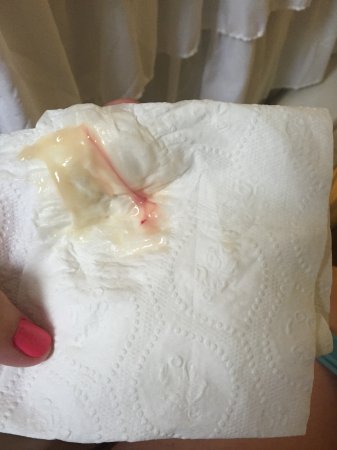When can you start exercising after c section
What You Should and Shouldn't Be Doing
Cesarean section delivery
Since the 1990s, rates of cesarean section deliveries have been steadily increasing around the world. In 2018, 21% of all births were delivered by C-section, according to data collected from 169 countries. In North America, more than 30% of all births are C-section deliveries.
As common as cesarean sections have become, the procedure is still major surgery and should be regarded as such. Like all other major surgeries, it takes weeks for proper recovery and healing after a C-section.
Exercise after C-section delivery usually needs to be postponed for longer than after a vaginal delivery. It’s also important not to push yourself too hard after a C-section: doing so can elevate the risk of infection and other complications that can prolong your recovery.
Take a quiz
Find out what you can do with our Health Assistant
When is it safe to exercise after cesarean delivery?
If you’ve had a C-section delivery, wait to jump into your post-pregnancy exercise regimen until at least six weeks postpartum, after you’ve visited your health care provider. Passing these two milestones before you begin exercising is vital to ensuring that your recovery goes smoothly.
Even people who had smooth deliveries need to be careful about postnatal exercise. Childbirth and cesarean section deliveries are traumatic to the body, and overexertion can cause problems.
If you want to get your body moving before your 4–6 week postnatal check-up, start with gentle, low-impact activity, like walking.
Once your health care provider has given you the thumbs up for exercise after delivery, you can slowly ease yourself back into a regular workout routine over a few weeks or months. Postnatal exercise after a C-section may look very different from your pre-pregnancy exercise regimen, but that’s perfectly okay.
Gentle exercises for the first six weeks
High-impact exercise, tummy-toning workouts, and full-blown cardio are definite no-no’s for the first six weeks after a C-section delivery. Here are some things you can do as soon as you feel up to it:
- Walking — As soon as you can get up and move around, venture out of the house and around the block a few times.
 It’ll probably feel great to get your body moving again.
It’ll probably feel great to get your body moving again. - Pelvic floor exercises — You may have already been doing pelvic floor exercises throughout your pregnancy, and if you have, you know how important they are. As soon as the catheter is out, you can resume doing Kegel exercises to strengthen the pelvic floor muscles that support your bladder, bowel, and uterus.
- Practice good posture — Pregnancy, C-section, and breastfeeding can all contribute to bad posture. Practice sitting up with your back straight and your shoulders back. This will help you to strengthen your stomach muscles and support your back.
- Light stretches — Focus on stretching your neck, shoulders, arms, and legs with light stretches that don’t put pressure on your C-section scar.
Abdominal exercises after C-Section delivery
Even after you’ve gotten the green light to exercise after C-section delivery, it’s important to ease into abdominal exercises.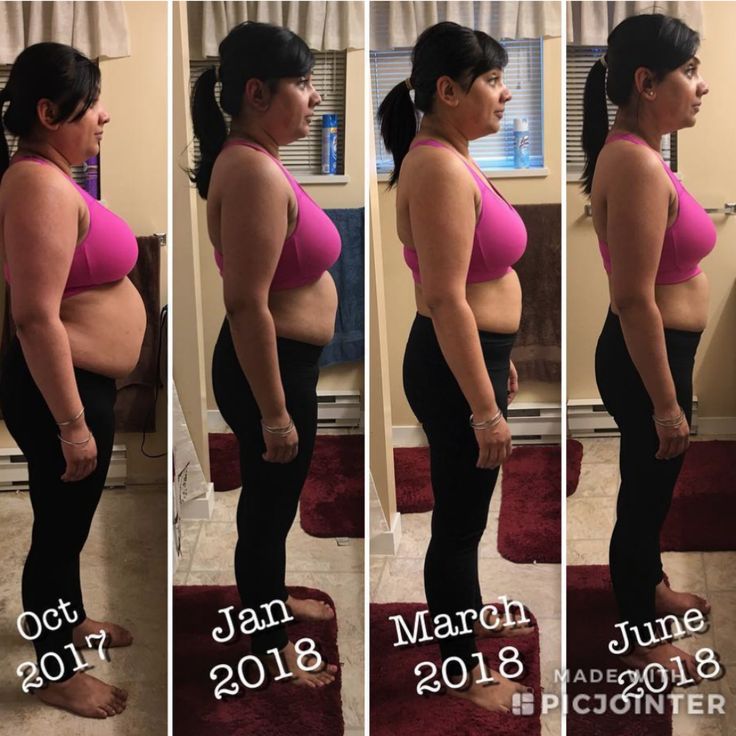
Before you exercise to strengthen abdominal wall muscles, make sure you don’t have a condition called diastasis recti, which is when there’s a gap in the rectus abdominis muscles of more than 2.7 centimeters after pregnancy. A gap in the rectus abdominis muscles isn’t considered dangerous, but it can create the appearance of pregnancy long after you have delivered. If you have diastasis recti, your health care provider may recommend modified workouts.
If you’re specifically looking for exercises to reduce your belly after delivery, focus on strength training exercises that engage the core but don’t cause it to bulge out. Avoid doing crunches, sit-ups, and regular planks at first.
These are some exercises you can do to strengthen abdominal muscles once your health care provider gives you the go-ahead:
- Pelvic tilts — This is one of the safest exercises to start with to strengthen the abdominal wall muscles after delivery. Lie on your back on a mat with your knees bent at a 90-degree angle and your feet firmly planted on the floor.
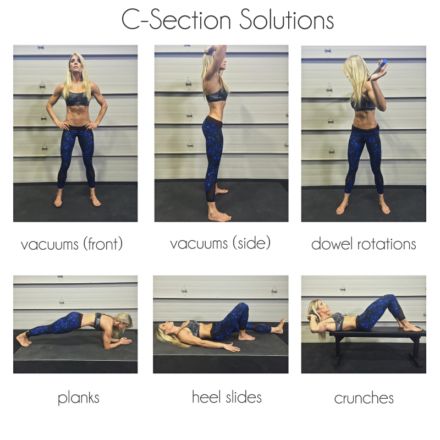 Tilt your hips toward your upper body and engage your core as you raise your butt about an inch off the floor. You should be closing the gap between the curve of your lower back and the floor. Hold the position for a few seconds, then release. Repeat 10 times.
Tilt your hips toward your upper body and engage your core as you raise your butt about an inch off the floor. You should be closing the gap between the curve of your lower back and the floor. Hold the position for a few seconds, then release. Repeat 10 times. - Modified or full side plank — The side plank engages your inner core muscles. Start with a modified side plank with your knees bent on the mat as you lift your body into plank position on your side.
- Wall sit — This exercise works to strengthen the quadriceps, hamstrings, pelvic floor muscles, and lower back. Stand one or two feet away from a wall, with your back facing it. Lean against the wall and go into a sitting position with your knees bent at a 90-degree angle. Engage your stomach and pelvic floor muscles and the position for as long as you can. Repeat five times.
Pelvic floor exercises after C-section delivery
Some of the most important postnatal exercises you can do engage the pelvic floor muscles.
Pregnancy puts a lot of strain and pressure on the pelvic floor muscles that support the bladder, bowels, and uterus. Additionally, during surgery, the bladder is moved to safely deliver the baby. This creates a lot of trauma for those organs and muscles, so it’s important to focus on strengthening them.
Try these pelvic floor exercises for after a C-section delivery:
- Kegel exercises — You can identify which muscles to engage by stopping urination midstream. The muscles that you use to do that are the same muscles that you contract to perform a Kegel. Contract and hold for five seconds, then release. Repeat 10 times. Do this a few times a day.
- Squats — To correctly perform a squat, stand with your feet slightly wider than shoulder-width apart. Bend your knees and squat down with your hips pushing back, like you’re about to sit in a chair. Once your thighs are parallel to the ground, hold the position. Your weight should be in your heels.
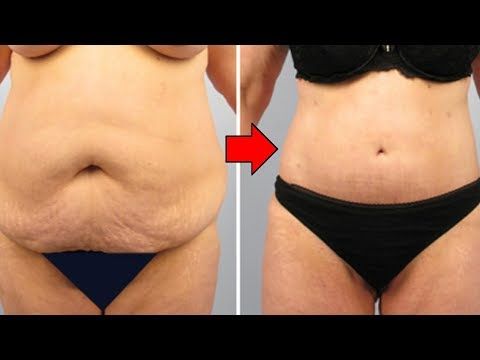 Straighten your legs and repeat 15–20 times.
Straighten your legs and repeat 15–20 times. - Bridge — The bridge is a great exercise for the gluteus and pelvic floor muscles. Start by lying on your back on an exercise mat, with your knees bent at a 90-degree angle and feet planted firmly on the floor. Push through your heels and raise your hips off the floor, squeezing your gluteus muscles and engaging your pelvic floor muscles. Your body should form a straight line from your shoulders to your knees. Hold for a few seconds, then release. Repeat 10–15 times, then rest for one minute and perform another set of 10–15.
Exercises to strengthen your lower back
Pregnancy and delivery can put a lot of strain on your back. On top of all that, the pregnancy hormone relaxin causes relaxing, softening, and shifting of the ligaments in the lower back and pelvis in preparation for childbirth. Whether you delivered vaginally or not, your body is affected by this hormone.
These are the best ways to protect and strengthen your lower back after pregnancy:
- Avoid lifting heavy objects and stay away from weighted exercises for a good while after delivery.

- Focus on strengthening the core and pelvic floor muscles to better support your back.
- Pay attention to your posture — sit straight with your shoulders back.
- Avoid sleeping on your back. Instead, lie on your side with a pillow between your knees to maintain a neutral position in your spine.
The pelvic tilt exercise and the bridge exercise, both mentioned above, are ideal for strengthening the lower back without putting too much pressure on it.
For another lower back exercise, do the lower-back twist. Lie on your back on a mat with your knees bent at a 90-degree angle, feet planted flat on the floor. Extend your arms out to your sides. Lower your knees to one side until they are stacked on the floor, making sure to keep your shoulders on the floor. Hold the position for 30 seconds, return to the starting position, and then repeat on the other side.
Cardio exercises after C-Section delivery
If you’d like to reduce the size of your belly after pregnancy, you’ll need to do cardio, which is an essential component of any post-pregnancy exercise regimen.
Start out with low-impact cardio workouts for the first four to six months after C-section delivery. Try these exercises:
- Walking
- Swimming
- Water aerobics
- Cycling
- Elliptical training
As your stamina and strength build up, slowly increase the intensity of your workouts.
Invest in compression garments
Compression garments are a good way to protect your C-section scar as it heals. They come in the form of tights, shorts, and corsets, and the pressure they supply supports the stomach muscles and lower back and increases blood flow as you heal from surgery.
Compression garments are not meant to “hold you in” or make you look thinner. Their purpose is purely medical. Compression stockings are great to wear throughout pregnancy to prevent or slow the progression of varicose veins.
Importance of postnatal exercises
Postnatal exercises are a crucial part of recovering after delivery.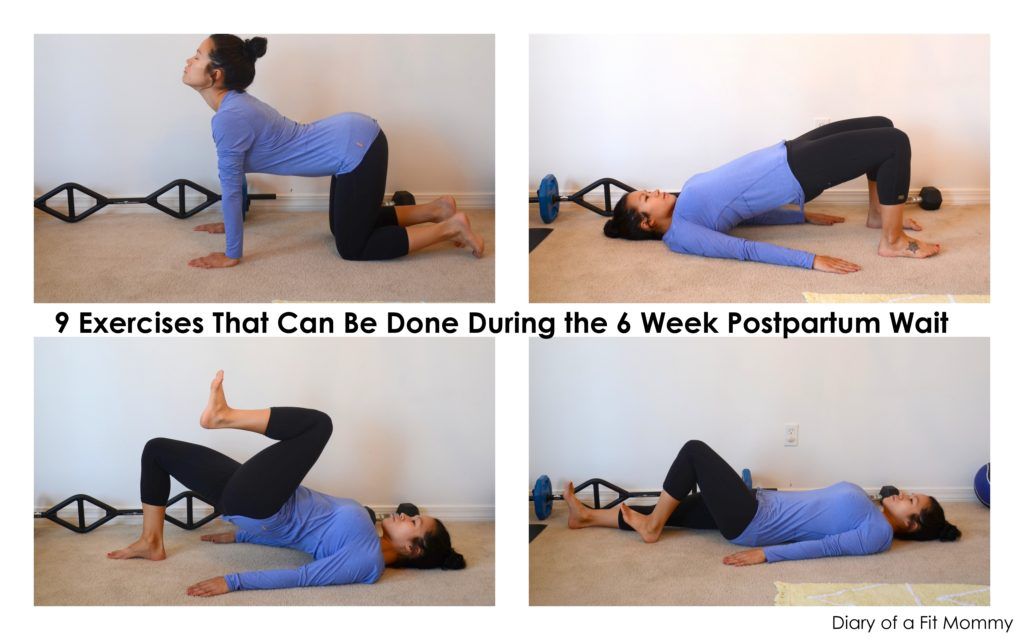 When done right, they help speed healing by supporting and strengthening your muscles and bones. Regular exercise also helps boost energy, so while it may be the last thing you feel like doing after caring for a baby all night and day, a brisk walk may be exactly what you need to feel refreshed and rebalanced.
When done right, they help speed healing by supporting and strengthening your muscles and bones. Regular exercise also helps boost energy, so while it may be the last thing you feel like doing after caring for a baby all night and day, a brisk walk may be exactly what you need to feel refreshed and rebalanced.
Your mental health will also benefit from postnatal exercise. Many new parents experience postpartum blues and postpartum depression. Exercise can combat those feelings by fighting off depression and promoting better sleep.
Just make sure not to push yourself too much, as overexertion after C-section delivery can have serious consequences, including wound infection or injury.
Exercises to avoid after C-Section
Your body needs a few months to heal before you reintroduce vigorous, high-impact activity and certain abdominal exercises. Avoid the following workouts for a few months after a C-section delivery:
- Abdominal-strengthening exercises that cause the stomach to bulge out, such as sit-ups and crunches, as well as ones that put a lot of stress on the abdominal wall, such as front planks, leg raises, and bicycles
- Exercises that involve jumping such as jumping rope, squat thrusts, jumping jacks, and plyometric exercises
- Sprinting or running
- Strenuous exercise classes such as body sculpting, Zumba, kickboxing, etc.
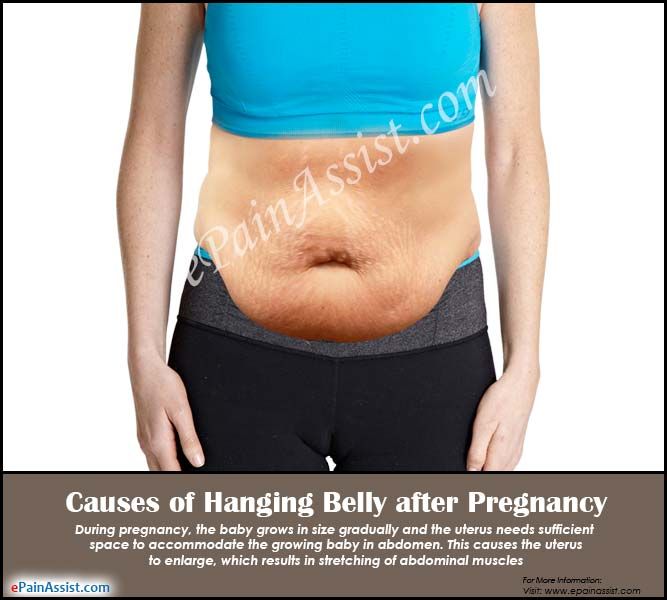
- Any exercise that pulls at or puts pressure on your C-section scar
- Any exercise that causes pain
This isn’t the time to push through the pain. Focus on no-impact and low-impact workouts for the first few months following a C-section delivery, and if you’re not sure if something is too intense, it’s best to just avoid it.
Conclusion
Postpartum exercise is important for your physical and mental health, but it’s even more important to make sure that you’re healing properly before beginning a post-pregnancy exercise regimen.
If you’re experiencing pain on or around your C-section scar while walking, make an appointment with your health care provider and hold off on exercising until after they say it’s safe to start.
When Can I Exercise After C-Section?
You welcome your child into the world and spend your first few weeks together bonding around the clock. But once you slowly start to get back to your routine (or a revised version of your routine, #helloparenthood!) one of the things you may be wondering about—perhaps even craving—is exercise.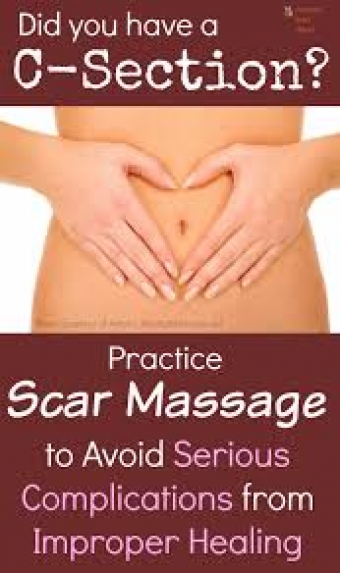 But when is it safe to start exercising again?
But when is it safe to start exercising again?
Perhaps unsurprisingly, that question is a lot more complicated if you underwent a cesarean section during childbirth. While c-sections may happen every day, they count as a major surgery. And surgical wounds need time to heal.
Still, that doesn’t mean you have to give up exercise after c-section. It just means that you have to be a little patient with how long you should wait and what you can do. Read on for the best types of exercise after c-section, exercises to avoid after c-section and, most importantly, how to know when you’re body is ready for it all.
In this article:
When can I exercise after c-section?
Best types of exercise after c-section
Exercises to avoid after c-section
How to flatten a tummy after c-section
When Can I Exercise After C-Section?
If you’re wondering, “when can I exercise after c-section?,” take heart: You won’t have to wait too long. “A c-section is an abdominal surgery, so six weeks is the minimum you should wait,” says Nazneen Vasi, PT, a physical therapist and owner of Body Harmony Physical Therapy in New York City.
But just because you’ve hit the six-week mark doesn’t necessarily mean you’re ready to resume exercise after c-section. “It’s imperative to go to the OB and get an okay prior to commencing physical therapy or exercise," she says, "because there can be complications, including slow healing at the incision site or an infection.”
After six weeks, if you get your doctor’s approval and you’re feeling good, Marianne Ryan, a New York City-based physical therapist and author of the book Baby Bod: Turn Flab to Fab in 12 Weeks Flat, suggests assessing your strength with the Straight Leg Raise Test.
To do this, you must be lying down with both legs straight out. Gradually lift one leg, making sure to keep your back flat on the floor. If you feel pain while raising the leg—specifically in the region of the incision—it’s too soon to start exercising. You can repeat the test weekly until you feel no pain, at which point, you can start gentle exercises (see more on that below).
Both Ryan and Vasi suggest seeing a physical therapist who can help guide your way. “A PT can assess the abdominal and pelvic muscle tone and strength, and offer guidance about proper techniques,” Vasi tells The Bump.
“A PT can assess the abdominal and pelvic muscle tone and strength, and offer guidance about proper techniques,” Vasi tells The Bump.
Best Types of Exercise After C-Section
Walking after c-section? Running after c-section? Planks after c-section? No sweat—just give it a minute.
Vasi says that in her opinion, a healthy woman with no complications can generally start running, swimming and doing yoga six weeks after surgery. Ryan, however, believes that to ensure the health of one’s pelvic floor, it’s better to wait a full three months.
The fact of the matter is, every woman heals at a different rate, so it’s best to assess how much pain you’re feeling at the site of the c-section incision. One way to tell if you’re fully healed, according to Ryan: The Jumping Test. Standing with a full bladder and feet shoulder-width apart, jump up and down 20 times, then cough five times. If you don’t leak any urine or feel any pain, then you should be ready to gradually return to more vigorous sports.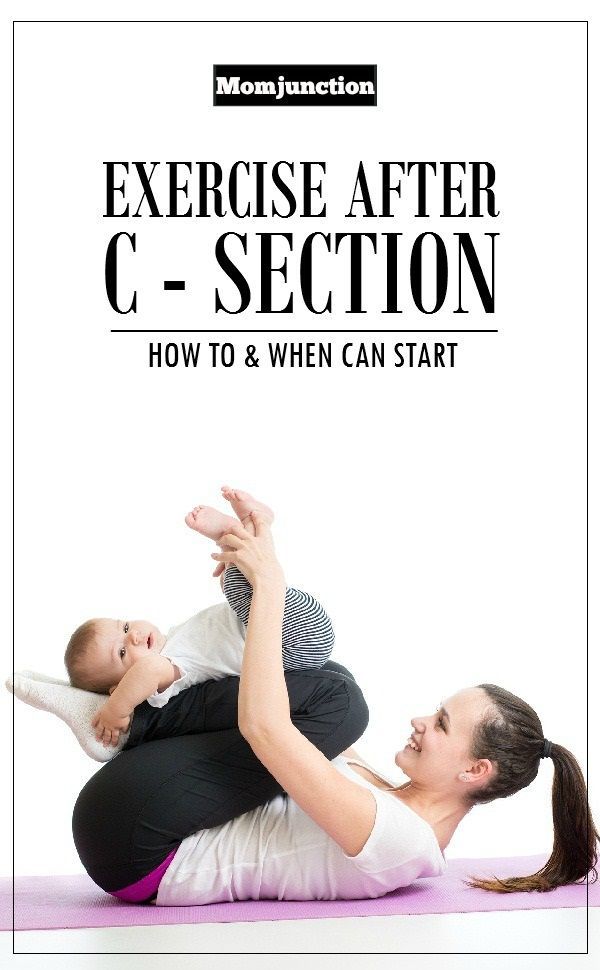
But before any of that happens, you should start with low-pressure fitness, specifically for the muscles of the abdominal wall. (That’s where the tightening up comes in!) Vasi also recommends Gyrotonics, a series of gentle exercises using dials, pulleys and weights that’s said to promote a quicker recovery after childbirth.
The moral of the story: You’ll be able to return to your favorite exercises soon. You just need to give yourself the time to heal properly—your body will thank you in the long run!
And if you simply aren’t sure, ask for professional help. “I would advise consulting with a PT trained in women’s health to assess the muscles and plan an exercise protocol for the patient tailored to her needs and physical status,” says Vasi.
Exercises to Avoid After C-Section
As for what exercises to avoid after a c-section? Crunches and curl-ups top the list, Vasi says. She explains that while they’re not unsafe per se, she would avoid them all the same, especially if a woman has diastasis recti (when the large abdominal muscles separate). Women with abdominal separation should absolutely consult a physical therapist before post-op exercising.
Women with abdominal separation should absolutely consult a physical therapist before post-op exercising.
Vasi also notes that you should avoid running if you have incontinence or organ prolapse. If you’re dealing with either, a physical therapist can advise when and how you can get back into running.
Avoid doing full planks (with the legs straight) right after delivery. Instead, try starting with half planks, with the knees bent first. Why? “It’s rare that I see people doing them correctly—including athletes!” she says. And done incorrectly, they can do more harm than good.
How to Flatten a Tummy After C-Section
And now for the question on all of your minds: What’s the quickest way to flatten a tummy after having a c-section? Ryan recommends the following four exercises:
• The Bridge. Lay on your back with your knees bent and your heels up (toes aimed toward the ceiling). Then raise your pelvis so your shoulders, hips and knees are aligned.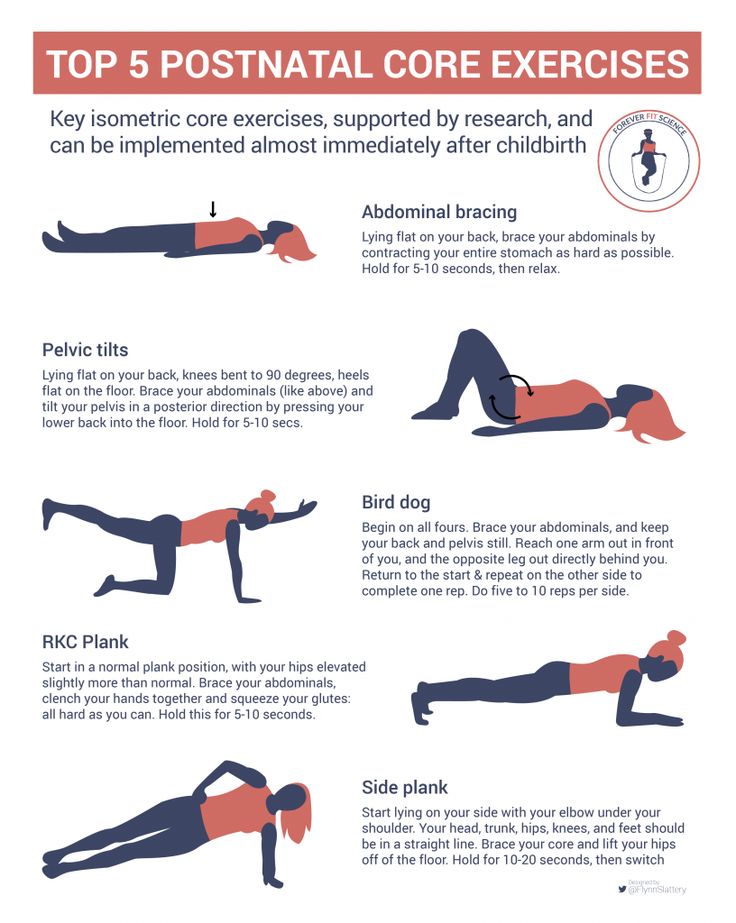 Pulse your pelvis five times before returning to the mat.
Pulse your pelvis five times before returning to the mat.
• The Tabletop. Begin on all fours and turn your hands in toward each other. Keep your hips over your knees and your shoulders over your hands. Bend your elbows slightly, tuck your chin in a bit and move your body forward so your breasts are over your hands. Then take a deep breath in so your ribcage expands laterally. Exhale. Hold this position for 15 seconds. You want to work your way up until you can do 30-second intervals, twice in a row.
• Slide-Leg Glides. Start by lying on your side with a pillow under your head for support. You want your entire spine, from your head down to your buttocks, in a straight line. Make a fist with your upper hand and press it into the floor in front of your tummy. Roll your hips forward a bit so they are stacked on top of each other. Bend your bottom leg so your knee is at a 90-degree angle. Lift your top leg up to hip height, and glide your leg forward and then back into a straight line with your body. Repeat this 15 times with each leg for one set.
Repeat this 15 times with each leg for one set.
• Knee Touchdowns. Start this move in the same position as the side-leg glides; on your side with your knees at a 90-degree angle. Then lift the foot of your upper leg so it’s facing toward the ceiling. Keeping your knee bent, bring your knee down and slightly forward so you can touch the floor with your knee, then extend that leg back up until it’s aligned with your body and above your hip. Repeat this 10 times with each leg.
Of course, Ryan points out that all of these are useless if your form is off. You need to be properly aligned, breathing correctly and engaging your core, which should feel as if your lower tummy is gently stiffening (without forcing it!). That’s what will flatten your tummy and strengthen your body postpartum.
To see Ryan in action and working with a patient on these exercises, you can watch this video.
Updated March 2020
Expert bios:
Nazneen Vasi, PT, DPT, PRPC, is a physical therapist and owner of Body Harmony Physical Therapy in New York City, with a focus on prenatal and postpartum care for women.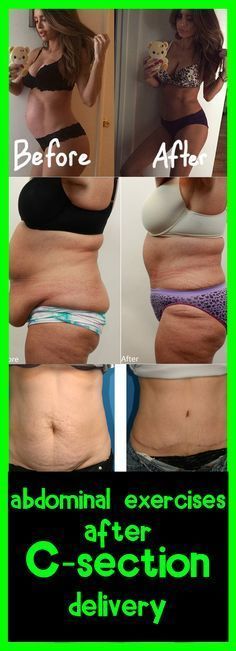 She received her PT degree with a concentration in neurology from the Krannert School of Physical Therapy, Indianapolis in 2005.
She received her PT degree with a concentration in neurology from the Krannert School of Physical Therapy, Indianapolis in 2005.
Marianne Ryan is a New York City-based physical therapist who specializes in prenatal and postpartum physical therapy. She’s also the author of the book Baby Bod: Turn Flab to Fab in 12 Weeks Flat.
Please note: The Bump and the materials and information it contains are not intended to, and do not constitute, medical or other health advice or diagnosis and should not be used as such. You should always consult with a qualified physician or health professional about your specific circumstances.
Plus, more from The Bump:
What to Expect During Your C-Section Recovery
Postpartum Recovery: When You’ll Be Able to Do What When
10 Best Postpartum Workout Moves for New Moms
90,000 when can you start, so as not to harm your health?January 10, 2020
July 3, 2020
3 minutes
876
ProWellness
Contents
- What happens during a caesarean section?
- Getting started
- Features of the first training
- What is forbidden while the stitches heal?
Disclaimer
Please note that all information posted on the site Prowellness is provided for informational purposes only and is not a personal program, a direct recommendation for action, or medical advice. Do not use these materials for diagnosis, treatment, or any medical procedure. Consult your physician before using any technique or using any product. This site is not a specialized medical portal and does not replace the professional advice of a specialist. The Site Owner is not liable to any party who has suffered indirect or direct damage as a result of misuse of materials posted on this resource.
Do not use these materials for diagnosis, treatment, or any medical procedure. Consult your physician before using any technique or using any product. This site is not a specialized medical portal and does not replace the professional advice of a specialist. The Site Owner is not liable to any party who has suffered indirect or direct damage as a result of misuse of materials posted on this resource.
Sports after caesarean section: when can I start in order not to harm my health?
An active lifestyle is good, but there are some restrictions on physical activity after certain surgeries and health problems. Some young women ask if they can exercise after a caesarean section and when they are allowed to start exercising.
What happens during a caesarean section?
This is a surgical intervention that is performed to extract the child. The procedure is always performed under general anesthesia and in 4 stages:
- Incision of the abdominal wall (except for the abdominal muscles, which are simply pulled apart) and uterus.

- Removal of a child.
- Cleaning the uterus from the placenta.
- Suturing.
This is a serious abdominal operation. In the early days, any physical activity is prohibited. Starting from day 10, you can start light exercise after consulting your doctor.
Beginning of classes
Starting from the tenth day, with the approval of the doctor, the first loads in the form of walks should be included in the regimen. You should do squats, bends, light exercises. The first days after the operation, the load will not be quite familiar: the child needs to be carried, rocked, fed. This will give the necessary activity, sufficient for the first days after cesarean.
If there are no complications, light gymnastics is acceptable, but without stress on the press. When a young mother walks with her child, she keeps her active by moving in the fresh air.
Attention! Active training after caesarean can be started at 6-8 weeks if there are no complications.
Features of the first training
Approximately 2 months after the joyful event, you can start training.
An important rule: the load must be increased slowly, with a gradual increase. Do not perform heavy, intense exercises. It is permissible to start with the following complexes:
- Pilates is a selection of leisurely exercises for all the muscles of the body without impact loads, which are safe for the abs and back.
- Water aerobics. The workouts are performed in the pool, giving optimal and smooth activity to the whole body.
- Yoga. It has a positive effect on the entire body, but you should not perform too complex exercises after a cesarean - increase activity gradually.
Attention! When six months have passed after the intervention, you should visit a gynecologist.Then you can include dancing or aerobics in your workouts. After 8 months, it is allowed to start loading on the press, running.
What is prohibited while the stitches are healing?
Until the stitches are completely healed, there are sports that are strictly prohibited:
- active cycling;
- running - these workouts affect the heart and are harmful after anesthesia;
- weightlifting;
- professional tennis;
- volleyball.
Attention! Any of these sports can adversely affect the healing of stitches, provoke bleeding, and cause complications.
As for other types of loads, during training it is necessary to observe your feelings. There are several symptoms that indicate the need to stop exercising:
- dizziness and other signs of feeling unwell;
- the seam has come apart;
- there was a discharge from the suture or vagina;
- pain in the lower part of the abdomen.

If you feel unwell for a long time, you should consult a doctor.
Motherhood, even with the help of an operation, is a joyful event. You don't have to limit yourself. Regular, adequate exercise will help you recover. The main thing is to listen to the body and not overdo it.
Disclaimer
Please note that all information posted on the site Prowellness is provided for informational purposes only and is not a personal program, a direct recommendation for action, or medical advice. Do not use these materials for diagnosis, treatment, or any medical procedure. Consult your physician before using any technique or using any product. This site is not a specialized medical portal and does not replace the professional advice of a specialist. The Site Owner is not liable to any party who has suffered indirect or direct damage as a result of misuse of materials posted on this resource.
Expert: Anton Losev Ambassador / fitness expert of the Siberian Wellness company
Reviewer: Ekaterina Vorobieva Adept of a healthy and active lifestyle
Read other articles on similar topics
Rate the article
(8 votes, average 4)
Share the article
How soon after childbirth can I go in for sports
I WANT A CLUB CARD
Almost all women put on weight after giving birth.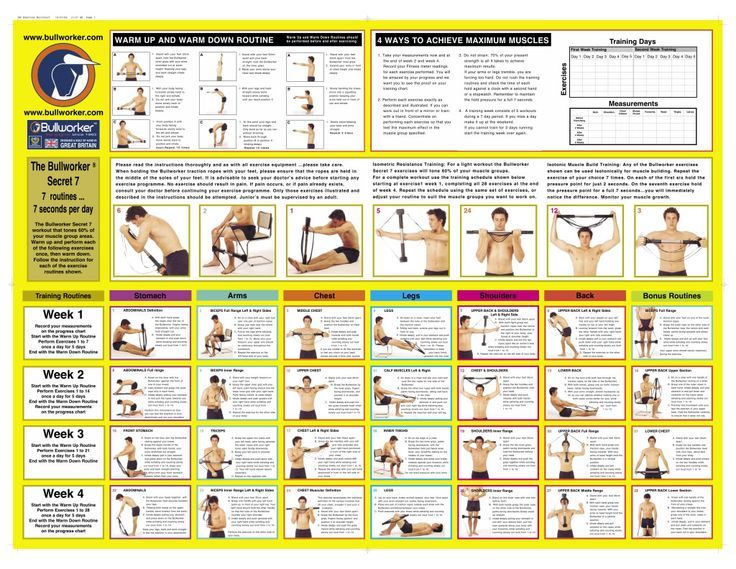 Someone manages to quickly get rid of it, someone wages a long war for many years. Sport after childbirth is necessary in order to restore beauty and elasticity to your body, as well as to feel energy, vivacity, and strength again. How long after childbirth can you go in for sports, what areas, what is better to refuse ?! Let's look for answers together.
Someone manages to quickly get rid of it, someone wages a long war for many years. Sport after childbirth is necessary in order to restore beauty and elasticity to your body, as well as to feel energy, vivacity, and strength again. How long after childbirth can you go in for sports, what areas, what is better to refuse ?! Let's look for answers together.
When can I exercise after childbirth?
Consider how long after giving birth you can play sports.
After vaginal delivery without tears/cuts. If the birth went “smoothly”, there are absolutely no contraindications, injuries, then you can start playing sports even the next day. When can I download the press after childbirth? More complex workouts, such as fitness, a swimming pool, can be started only after 1.5-2 months.
After vaginal delivery with tears/cuts. In this case, you can allow the minimum load only after a month. In parallel, you should be observed by a doctor and gradually load the body.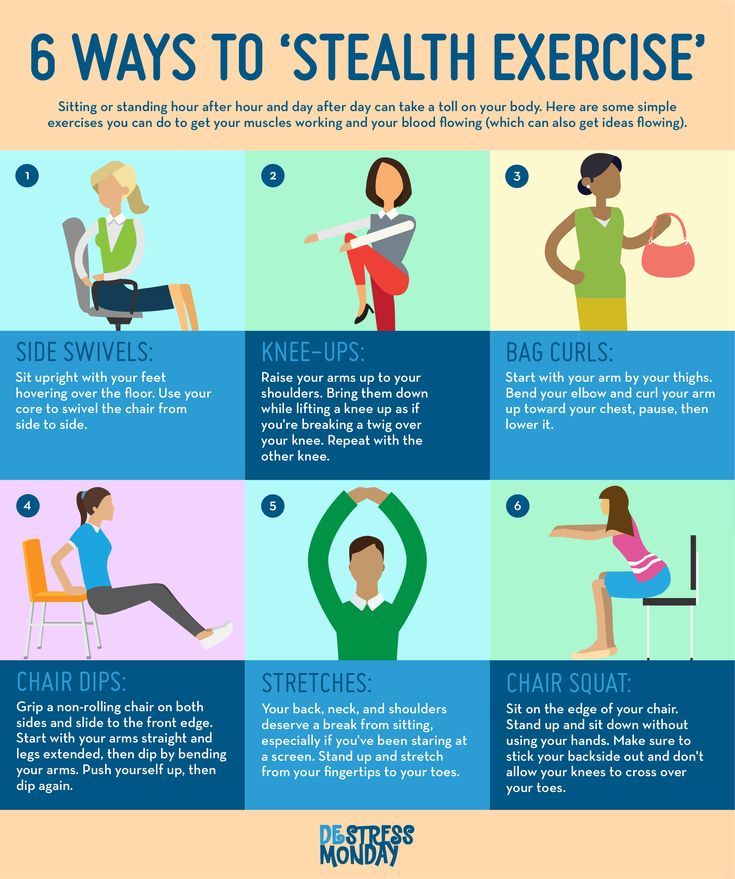
After caesarean section. Recovery after a caesarean is a complex and time-consuming process. The first loads are permissible only 2 months after the birth of the baby, gradualness is important here.
Can I exercise while breastfeeding?
Sports during breastfeeding are not contraindicated and do not affect the quality of milk. It is important to drink plenty of water and not do complex chest exercises. For training, it is best to purchase a supportive bra. If you have a feeling of fullness in the chest during the session, then the next time you feed the child before training. For pain, you can use two bras at the same time to provide maximum support. Can I play sports while breastfeeding? Now you know the answer for sure.
What sports can I do after childbirth?
Many people are concerned about the question “is it possible to play sports after childbirth?” and the answer is yes, yes, and again, yes! However, it is important to understand which areas of sports will benefit and help the body get stronger, and which ones can harm.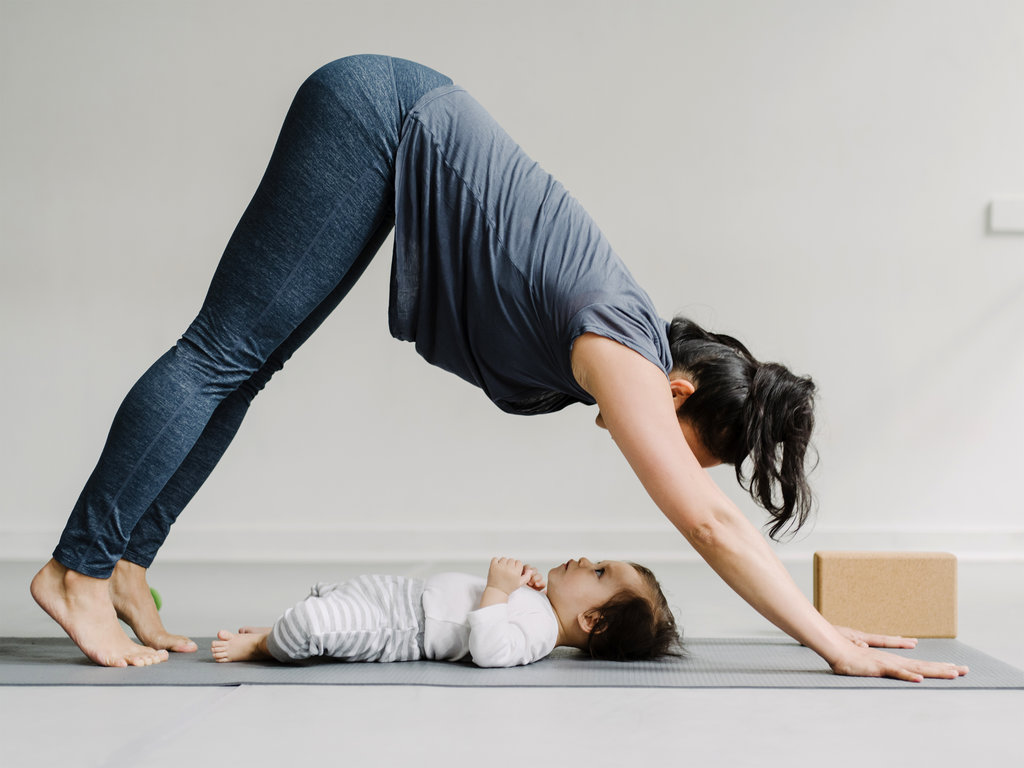
1. Calm walking. You can walk alone or together with a newborn baby in a stroller. The main rule is not to overload yourself. Walks can be 20 or 30 minutes, it all depends on your well-being and desire.
2. Water fitness. Physical exercises after childbirth on land are prohibited due to the high elasticity of the ligaments, however, in water it is quite difficult to damage the joints and ligaments, therefore aqua fitness is recommended after childbirth.
3. Swimming. Back pain, heaviness - consequences of childbirth. Swimming will help relax your muscles and restore their tone.
4. Yoga. Yoga perfectly levels the emotional background and relieves depression and prevents nervous breakdowns.
How to start exercising after childbirth?
When can I play sports after childbirth? Everything is very individual and depends on how active you were physically before pregnancy. If the birth occurred naturally, then you can start training in a few weeks. When can I exercise after a caesarean? Depends on the severity of the complications, so it is recommended that you always consult with your doctor. Sports after cesarean should be introduced into life very carefully. Be sure to do a warm-up, drink plenty of water, get plenty of rest.
If the birth occurred naturally, then you can start training in a few weeks. When can I exercise after a caesarean? Depends on the severity of the complications, so it is recommended that you always consult with your doctor. Sports after cesarean should be introduced into life very carefully. Be sure to do a warm-up, drink plenty of water, get plenty of rest.
What sports should not be practiced after childbirth?
Physical activity after childbirth is not fully available immediately. There are certain sports that are strictly contraindicated, and there are those that are acceptable, but in limited quantities. The following sports are prohibited:
1. Run. While running, a person loses a lot of calories. For women who have just given birth, running can result in a lack of milk and changes in its taste.
2. Any direction that enhances the feeling of adrenaline.
3 .



